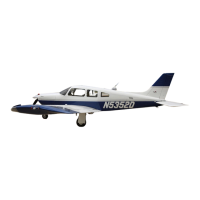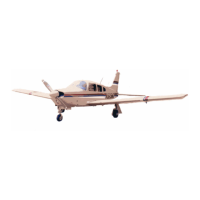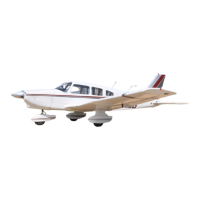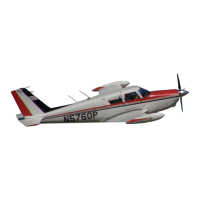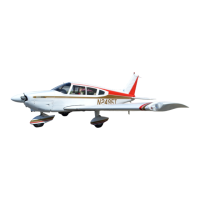2. The valve body and gear case assembly may be assembled to the reservoir as follows:
A. If removed, place the pump gears in the gear case and install cover. Install cover attaching bolts
and secure.
B. Lubricate the reservoir seal ring with hydraulic fluid (MIL-H-5606) and place it in the recess
provided in the case.
C. Position the valve body and gear case assembly with the reservoir. Care should be taken when
lining up the armature drive with the pump gear. Do not run the motor to do this.
D. Ascertain that the seal ring is properly positioned and install attaching screws. Tighten the screws
so that with the motor connected to a 14-volt source and with an ammeter in the circuit, the current
drawn does not exceed 12 amperes.
3. The base of the pump may be attached to the pump as follows:
A. With the pump in the upside-down position, lubricate O-ring seals, and install in the recesses
provided in the valve body and gear case assembly.
B. Install attaching bolts with washers and torque to 70 inch-pounds.
C. Safety attaching bolts with MS20995-C32 wire.
4. Conduct motor operational check not to exceed 10 seconds running time.
TEST AND ADJUSTMENT OF HYDRAULIC PUMP. (Refer to Figure 29-6.)
1. Test Equipment:
A. Hydraulic pump and mounting base.
B. Pressure gauge (0 to 1000 psi).
C. Pressure gauge (0 to 3000 psi).
D. Hoses with fittings to connect between base and gauges.
E. Power supply (14 VDC).
F. Ammeter (0 to 100 amps).
G. Fuse or circuit protector (100 amp).
2. Test and Adjustment:
A. Connect a 0 to 1000 psi gauge to the low pressure port (port No. 3) of the pump base. (The low
pressure port, No. 3, is located nearest to the pipe plug installed in the base.)
B. Connect a 0 to 3000 psi gauge to the high pressure port (port No. l) of the pump base. (The high
pressure port, No. 1, is located farthest from the pipe plug installed in the base.)
C. Connect the black lead of the pump motor to the negative terminal of the DC power supply.
D. Fill the pump reservoir and bleed all air from the attached lines. (Lines may be bled by alternately
connecting the blue electrical lead and green lead to the positive terminal of the power supply until
all air is exhausted.)
E. Connect the blue lead to the positive terminal of the power supply. Pump should operate and the
high pressure gauge should indicate between 1600 to 2000 psi. (2000 to 2500 psi on Piper P/N
67509-2.) Should the pressure be incorrect, adjust valve “A,” Figure 29-5, in pump reservoir.
F. Disconnect the blue lead, and the high pressure reading should not drop more than 300 psi in five
minutes. High pressure may not be selected until after five minutes.
G. Connect the green lead to the positive terminal of the power supply. Pump should operate in
reverse, dropping the high pressure gauge to zero and the low pressure gauge should indicate
between 500 to 800 psi. When the green lead is disconnected, both pressure gauges should indicate
zero psi. (Should the pressure of 500 to 800 psi be incorrect, adjust valve “B,” Figure 29-5, in
pump reservoir.)
—NOTE—
During test Steps E through G, there should not be any external
leakage.
29-10-06
Page 29-20
Revised: December 21, 1981
2C14
PIPER AIRCRAFT
PA-28RT-201 / 201T
MAINTENANCE MANUAL
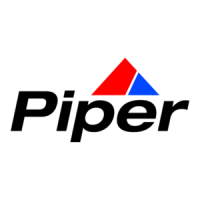
